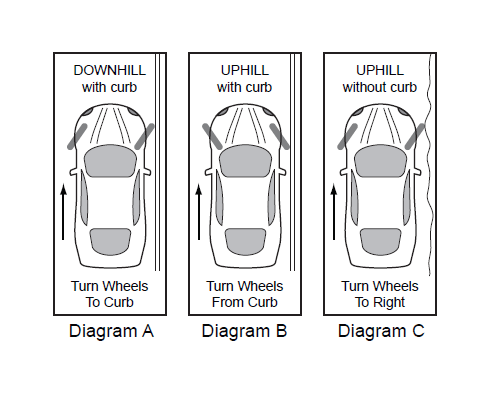Guaranteed 12/24 Delivery Still Available see item page for details! available on most items - Details
How to Install Wilwood Parking Brake Cable Kit on your Mustang

Shop Parts in this Guide
Disassembly Instructions
Remove the Original Equipment Manufacturer’s (OEM) parking brake cables:
•Raise the rear wheels off the ground and support the rear suspension according to the vehicle manufacturer’s instructions.
FROM INSIDE THE VEHICLE:
• Be sure parking brake lever is released (off) inside the vehicle.
FROM UNDERNEATH THE VEHICLE:
NOTE: Make note of the existing cable routing. The Wilwood cables will be installed along the same path.
• Detach OEM cables from the OEM rear calipers.
• At the balance bar, detach the OEM cables from the bulkhead (in the driveshaft tunnel). Install a small hose clamp so that it surrounds the spring clip at the bulkhead. Using a long screwdriver, tighten the hose clamp around the spring clip and pull on the cable from the rear until it comes free of the bulkhead and remove. Perform the same technique on the second cable and remove.
• Unbolt and save the brackets holding the OEM cables to the chassis.
• Remove both left and right side cables (do not remove the balance bar, it will be reused with the Wilwood cable kit).
Assembly Instructions
IMPORTANT:
• To ensure maximum performance from your parking brake system, the cables must be routed as straight as possible. Bends in the cable can significantly reduce efficiency and thus reduce pull force at the brake. Tight bends must be avoided with a minimum recommended bend radius of 6" to 8".
• Cables should be properly restrained to prevent "straightening" of bends when tension is applied. Restrain movement of cable by affixing the cable sheath to body or chassis by fitting cable clamps at various points over the length of cable or by using original equipment cable attachments points. The clamping method chosen will require that cable sheath be held tightly without movement, crushing or causing interference to the
internal cable.
• Cables must be initially pre-stretched by multiple applications of the brake handle, then re-adjusted to correct
tension.
NOTE: The driver and passenger side cables differ in length and must be installed on the correct side of the vehicle. The driver’s side cable is shorter.
FROM UNDERNEATH THE VEHICLE:
• Install Wilwood disc/drum parking brake kit per its instructions.
• Install the OEM brackets over the Wilwood cable in the same position that they were removed from the original cables.
• Slide slot in clevis, Photo 1 over the parking brake lever, Photo 2. Slide cable end fitting into the slot on the cable stop bracket, Photo 3. Snap in place with pliers the c-clip retainer to secure the cable, Photos 4 and 5. NOTE: It is recommended that you use anti-seize lubricant on all aluminum nuts.
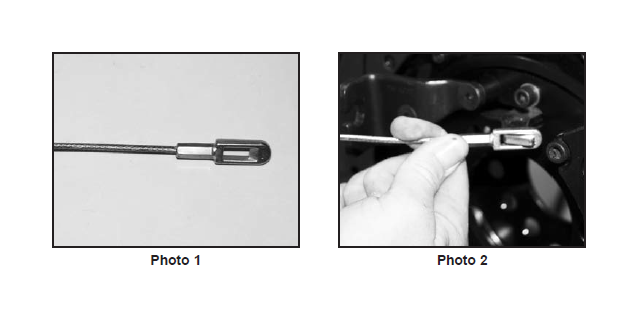
• Route new cable in the same location as the OEM cable, from balance bar to the parking brake. Carefully route cable to prevent contact with exhaust or moving suspension, brake or wheel components. NOTE: it’s the installer’s responsibility to properly route and ensure adequate clearance and retention for parking brake cable components.
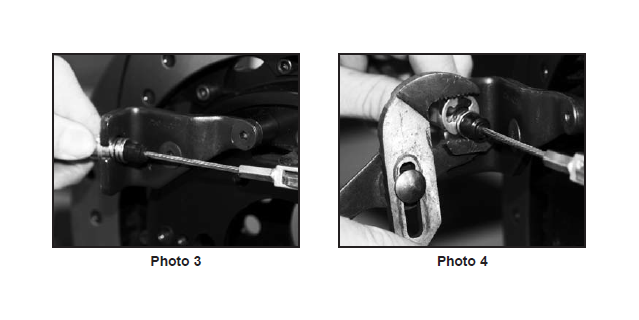
•Attach the other end of the new cable to the balance bar assembly,as shown in Photo 6. Adjust the cable in the bulkhead so it is approximately centered in its adjustment range.
•Repeat the above steps from the beginning on the other side of the vehicle. Continue with the installation after you have both cables routed forward.
• Attach OEM brackets, that were slipped over the new cable, in their original mounting holes.
•Tighten all bracket bolts and hardware.
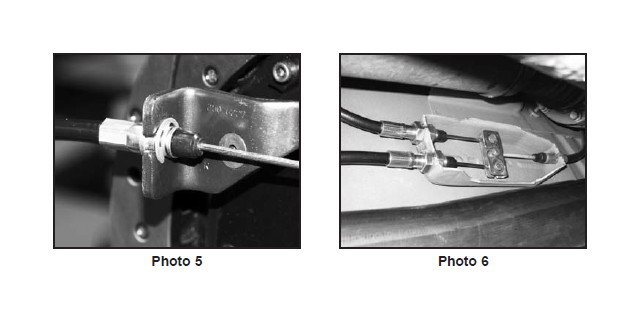
SETTING THE PARKING BRAKES:
• Adjust the internal parking brake shoes by removing the dust cover from the inboard side of the backing plate, Photo 7.
• Using a brake shoe adjustment tool (available from any auto parts store), or straight screwdriver, adjust the “star” wheel while spinning the rotor until a slight drag is felt, Photo 8.
•Test parking brake in a safe area, on a slight incline then on a steeper incline. If further adjustments are necessary, please repeat the above referenced procedure and test again.
• If you still are having problems with the installation, contact your Wilwood retailer where the product was purchased. Additional technical support is available by calling Wilwood Sales and Technical department at (805) 388-1188 or for e-mail technical assistance at: [email protected].
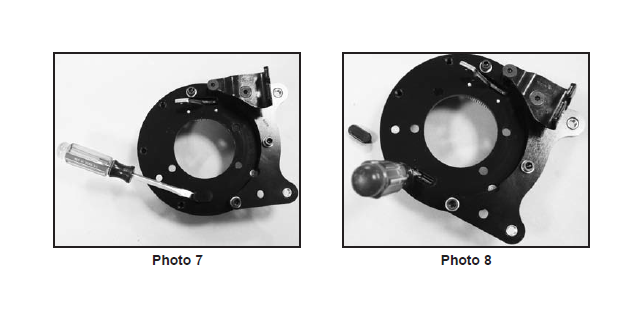
Brake Testing
WARNING • DO NOT DRIVE ON UNTESTED BRAKES BRAKES MUST BE TESTED AFTER INSTALLATION OR MAINTENANCE MINIMUM TEST PROCEDURE
• Make sure pedal is firm: Hold firm pressure on pedal for several minutes, it should remain in position without sinking. If pedal sinks toward floor, check system for fluid leaks. DO NOT drive vehicle if pedal does not stay firm or can be pushed to the floor with normal pressure.
• At very low speed (2-5 mph) apply brakes hard several times while turning steering from full left to full right, repeat several times. Remove the wheels and check that components are not touching, rubbing, or leaking.
• Carefully examine all brake components, brake lines, and fittings for leaks and interference.
• Make sure there is no interference with wheels or suspension components.
• Drive vehicle at low speed (15-20 mph) making moderate and hard stops. Brakes should feel normal and positive. Again check for leaks and interference.
• Always test vehicle in a safe place where there is no danger to (or from) other people or vehicles.
• Always wear seat belts and make use of all safety equipment.
Parking Brake
WARNING • PARKING BRAKE
• Parking brake must be properly adjusted before use and must be manually readjusted for wear if parking brake handle or foot lever travel becomes excessive.
• The holding ability of the brake should be tested by stopping on a sloping surface and applying the parking brake while holding car with the hydraulic foot brake. This should be accomplished both facing up and down hill.
• Do not rely exclusively on the parking brake to hold the car; Curb wheels as recommended by the applicable diagram and put gear selector in park, or shift into first gear or reverse with a manual transmission.
• Diagram A - When parking facing downhill, turn front wheels towards the curb or right shoulder. This will keep from rolling into traffic if the brakes become disengaged.
• Diagram B - Turn the steering wheel to the left so the wheels are turned towards the road if you are facing uphill with a curb. The tires will catch the curb if the car rolls backward.
• Diagram C - When facing uphill without a curb, turn the wheels sharply to the right. If the vehicle rolls, it will go off the road rather than into traffic.
• When parking on a hill, always set the parking brake and move the gear selector into park, or shift into first or reverse gear if your vehicle has a manual transmission.
